A comparison of these two GPS Data Logger s
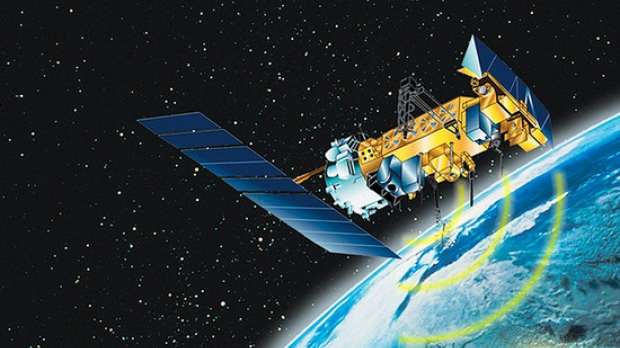
Many of us love Hiking. We bring tons of pictures, and then long evenings poking around, trying to choose the best, to have something to show to friends and acquaintances. But some do little. Want sometimes, you know, to plunge into the memories are still a little fuller. I wish to record the route and then view it on the map or in Googlebase!
The first thing that comes to mind is the Navigator. Won't touch concrete implementations, it may be a dedicated device, and the app on your smartphone. However, every outdoorsman knows that batteries run out at the most inopportune moment (and more serious, breaking off the handle off a toothbrush, remember about the weight of the backpack). And it is not always possible these same batteries to change or recharge. Yes and a card is not always necessary, you just want to know the path.
Our last trail rides, a friend of mine was the Navigator Gramin Oregon 450, which we track and wrote. To analyze the track was very fun! You can see the speed, and then to remember where you've rysili where hlopchik did, and where and step trailed, where they watered the horses and where the Parking lot did. And when you consider that this data is a "snap" photos and even make beautiful .kmz file with notes and photos!.. In General, the scope for imagination.
Henceforth, it was decided to "write" all the trips and I began to search for the device.
To begin, I identified the criteria necessary for the device:
— maximum compactness;
— only logging, without navigation;
— the maximum time of Autonomous operation;
— set the POI button (but not necessarily).
Was tossed the worldwide market of Ebay and "electronic "Cherkizon" AliExpress. On DealExtreme I didn't even go because I want a reliable device, preferably from a reputable manufacturer. On EBay e is dominated by tracking devices for cars/kids/Pets with the ability to receive current location bhakta via GSM-channel. AliExpress "promoting" DVRs. However, devices from a finite set to which I have come to meet you here and there. But the most complete "catalogs" with a more or less sane descriptions located here and here.
strangely enough, but sensible information on these types of devices quite a bit, although it turned out that very many are attracted to the idea of snapping photos to the coordinates of the location. Network why descriptions of such services, even on habré this question were discussed. But a detailed consideration of the functionality of junk I almost not found.
Anyway, after much digging on the manufacturers ' websites, on Youtube in particular and Internet in General, personally my choice fell on the following devices:
1. Holux M-241c
2. Holux M-1200E
3. GiSTEQ PhotoTrackr Mini (DPL900)
4. Columbus V-990
Number 1 "retired" for quite prosaic reason: there is no place to buy. There is a model without an index "c", with coordinates to be sent via Bluetooth, but to me it is not absolutely necessary, only eats away the resource of the battery, and read the rumors that recently the quality of the devices is not that many complain of large errors in determining the location. Besides, as I was not looking, but never realized, is it possible to put POI on this device. Well, chip MTK (MediaTek) is the first generation, according to reviews, quite slow and Prokhorov in terms of power (at least in comparison with the chips of the second generation).
Very sorry! After all, a perfect toy, judge for yourself: it works on AA-batteries, has a display showing the time received from the satellite (one picture and you just know the time offset of your camera relative to a Logger).
Room 2 is also on the market failed (I was looking for in a "decent" shops with Express delivery).
Number 3 on the official website is no longer for sale. Managed to find its upgraded version on a more modern chip SiRF Atlas IV — Canmore GT-730FL-S.
Eventually purchased two devices: Columbus V-990 and Canmore GT-730FL-S what helped a lot this comparison GPS chip.
Columbus V-990:
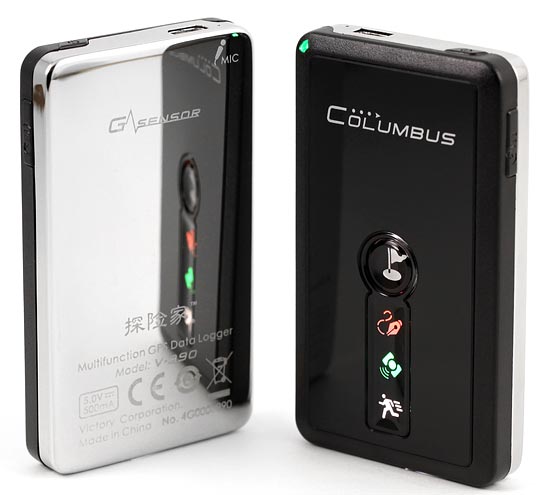
The device is, of course, beautiful. The back polished metal surface and velvety soft cover makes it look like the lighter. Charging takes place via the mini-USB port And this, alas, is its only purpose, to get data on it (although contacts D+ and D - from the connector somewhere to go). The "heart" of the device is microcontroller PIC 18 series.
The advantages include a GPS chip production MediaTek second generation (MTK 3329), able to work with 66th satellites (?!), motion sensor (which turns off track recording at rest), the battery on 1000 mA/h, the opportunity not only to put labels, but to do them the voice prompts and the ability to install a memory card up to 2 GB, which gives us just an incredible amount of space for recording tracks. However, without the memory card device does not work, or rather work, but the track is nowhere to write. And having reviewed the device, we will see that the appalling quality of the recording of voice labels is because the hole in the casing and the microphone on the PCB as far from each other as "A", "I":
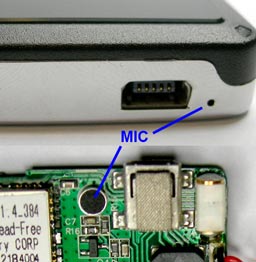
by the Way, the device can be translated in so-called "Spy mode" in this mode, the device wakes up after a certain period of time (set in settings), saves its coordinates and again safely "sleep" until the next time. However, I myself, this mode is not checked, as interest arose.
Of the downsides are the following:
— the display "fades" in daylight, it becomes practically unreadable;
— to install the POI to the voice tag is used a separate button, it is quite small, located on the side and with a small swing.
— when recording the voice tag the setting point in the log occurs after the button is released (i.e., after recording), it is immaterial when walking, but if you move quickly, during this time, you can be far from necessary to mark the place;
— if you overdo the settings button POI longer than necessary, it will start recording a new track.
Canmore GT-730FL-S:

Externally, this logger looks like a fat flash drive. Case material — plastic. Overall it's pretty decent, except that no such gloss, as Columbus'. The device charges via USB, connecting as normal USB flash drive. The manufacturer indicates the battery capacity is 450 mAh.
With satellites running chip SiRF Atlas IV, claimed to support 48 satellites (GPS and Galileo).
To retrieve data, you need to install the driver for the virtual COM port that emulates microcontroller STM32, is also the "heart" of this device. Data (tracks) are extracted either program from the manufacturer (CanWay) or the program from the "original" (GiSTEQ PhotoTrackr Mini (DPL900)) — PhotoTrackr. However, reading something and gpsbabel, but the exact launch options I found (and did not look long, actually).
I will give you some photos of the innards.
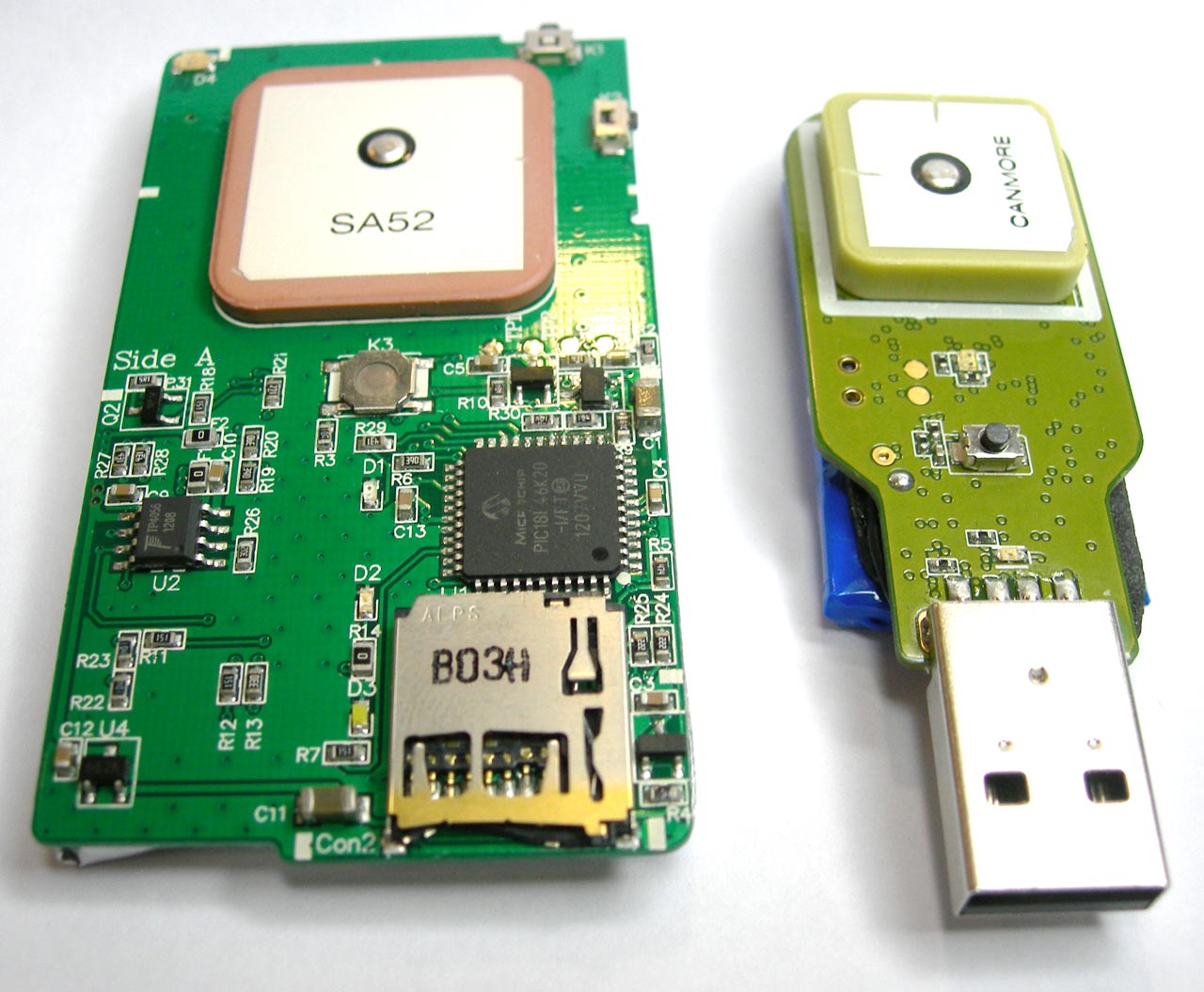
As you can see, the patch antenna have Columbus'and area slightly larger than that of a competitor. Perhaps this is due to the fact that MediaTek GPS chip combined with an antenna, while SiRF is two separate devices. However, I could be wrong and if so correct me in the comments.

The inquisitive eye will notice that the contacts D+ and D - the mini-USB port somewhere divorced, but practical sense, unfortunately, is still there.

The lower left corner of the photo, a square ~5 mm — this is a GPS chip SiRF Atlas IV.
And a couple of photos for sizing:
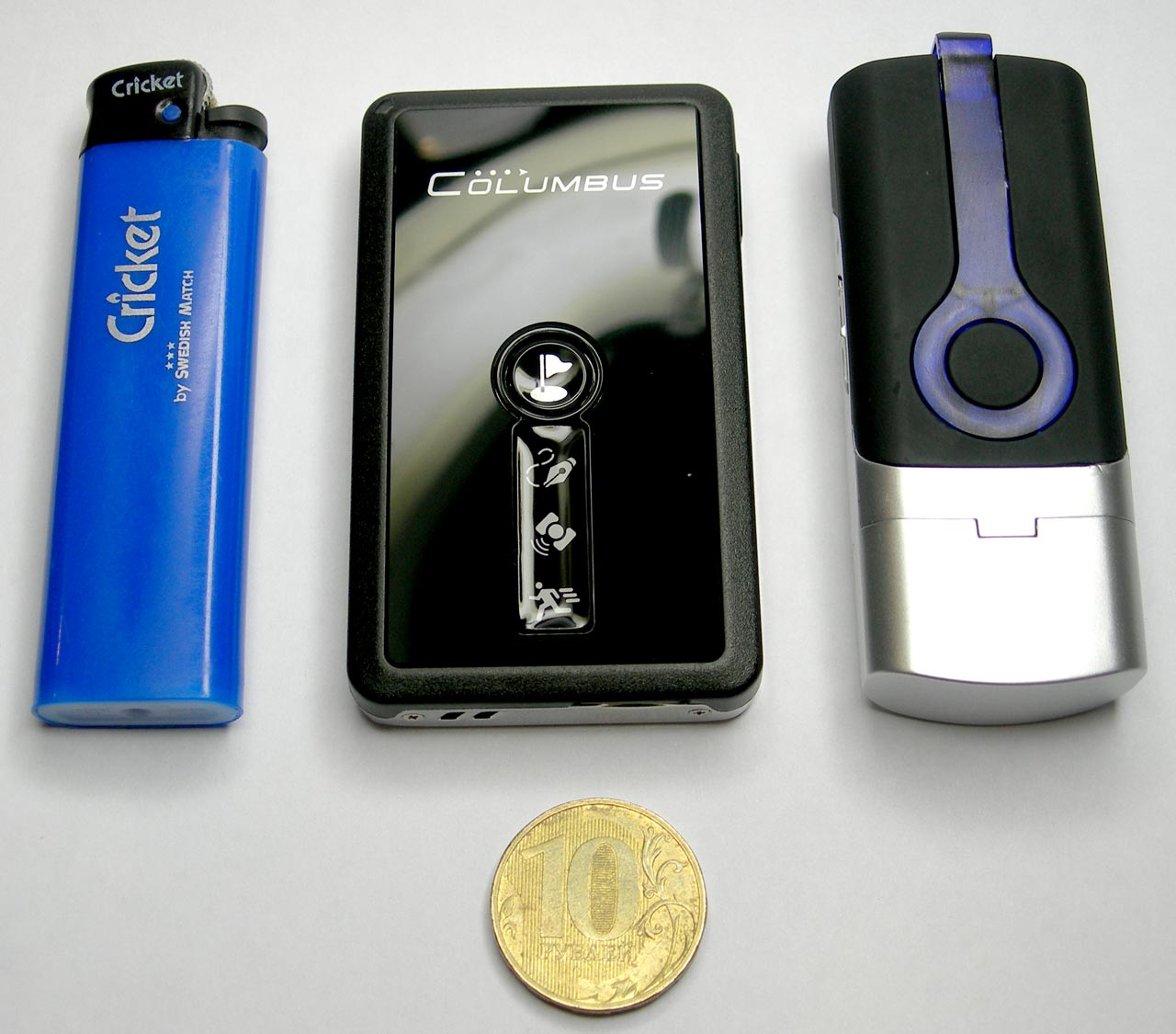
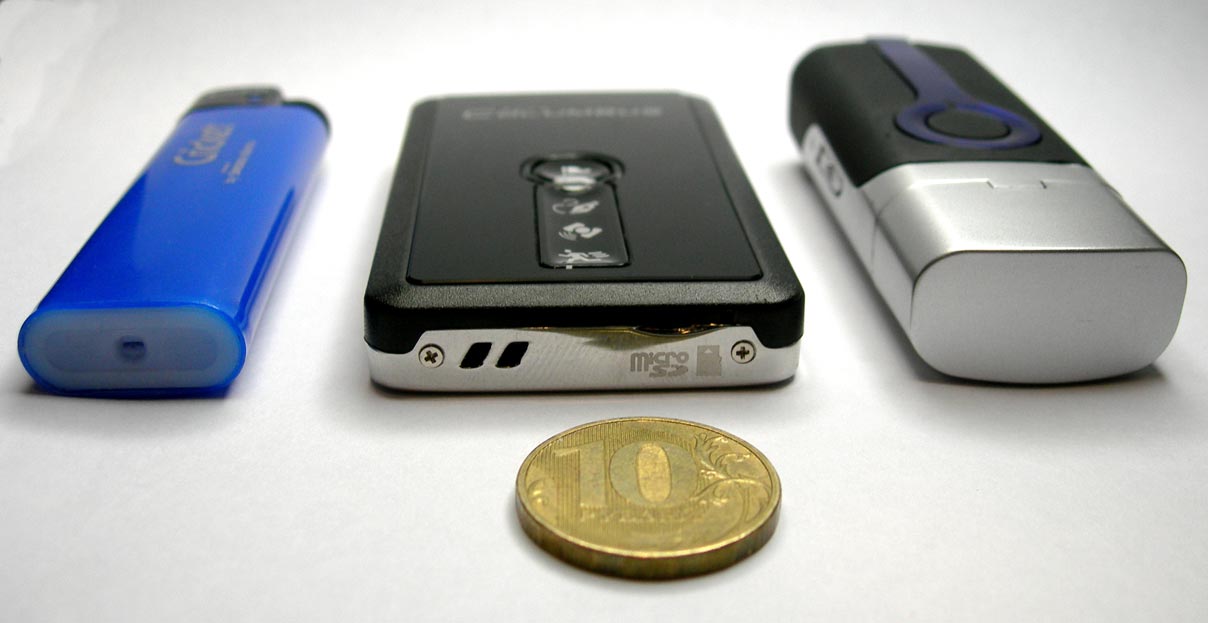
Tpaper talk about the practical side of usage and once in a comparative form.
Columbus catches the satellites in about 40 seconds, Canmore — about three to five minutes. Columbus confident "keeps track", but it sometimes has problems with the incorrect determination of the height (spades up, mostly in moments of connection with the satellite). Both devices are not without problems with the appearance of "anomalous" points (spike aside), however, infrequent and experience in General, do not spoil. There is a difference with the definition of height between these two devices:
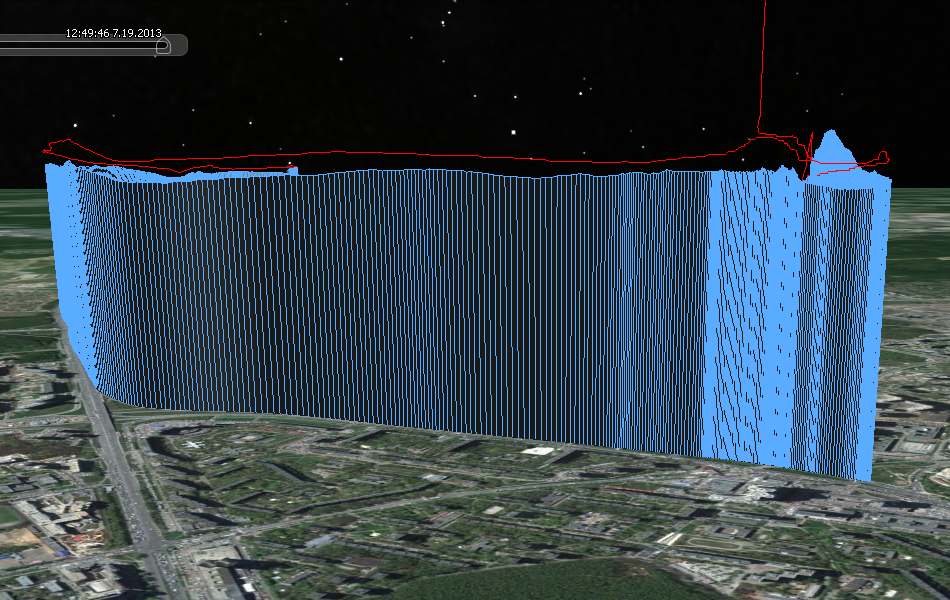
Blue — Canmore, red — Columbus. Noticeable difference in the determination of the height and the jump height from the chip MTKII.
unfortunately, to say more about the structure of the Canmore GT-730FL-S I can't. I got the device with marriage (battery not charging), therefore, use only those data that have managed to accumulate.
POI on Canmore are at the moment of pressing, confirmation — triple flashing led, no sound. Columbus in this respect better, as there is audible confirmation.
Voice tags Columbus'and quality are disgusting (the reason I pointed out above). Mode battery periodic recording tracks for long enough, and it is unlikely that someone will need to write without stopping a track lasting more than 5-6 hours. Except for traveling, but there is electricity handy.
Important point receiving data from the device. Columbus writes the track to a file .csv to the SD card, and adds a voice tag (files .wav). Converted easily, and turnkey solutions enough.
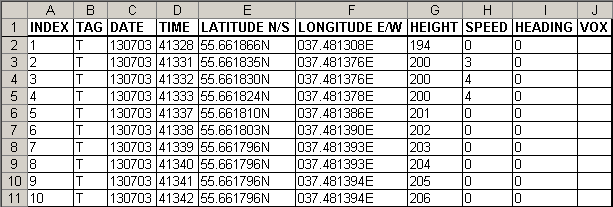
Column TAG: T is a common point, C — POI, V — voice memo (column VOX — the file name with the voice tag, no extension).
To read data from the card and convert them there is no difficulty in almost any modern OS and this is another huge plus Columbus'.
Since I "vinduzyatniki", the problems with installing the driver and reading the data from Canmore I did not have, but what about the followers of other OS's I don't know. If You know, please write in the comments. I am sure that many of the decision will be useful.
That seems to be all. In General, both the device I liked but none of them impressed perfect.
For those interested in spread two demo tracks and an example voice tag, and Columbus', one on each device. The tracks I've slightly adjusted (cut too much) so that they started and ended at the same time. I came out of the subway (running the logger in a bag), came to a stop, waited for bus, drove to work, got out and walked to the entrance. I think of these tracks, anyone will be able to assess the work of a particular GPS chip.
PS If I may, I would describe my vision of an ideal marching logger:
— work from one battery size "AA" or one or two batteries size "AAA";
— ability to install memory cards format micro SD card;
— the presence of buttons conveniently located near the POI, the installation points on the track is simple by pressing the confirmation sound signal;
— the LCD screen displays the number of the currently received satellites, current time (for synchronization time shift in the camera) and battery level (4-5 segments);
— GPS chip MTK 3329 or more modern, preferably with GLONASS support.
— water resistance IPX7;
If You know the device that combines all of these characteristics, immediately notify me!
Комментарии
Отправить комментарий